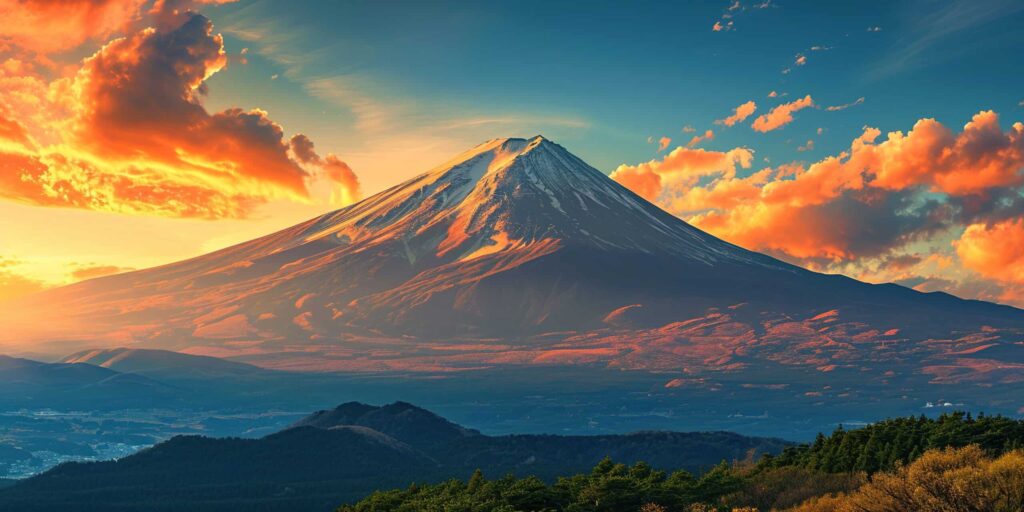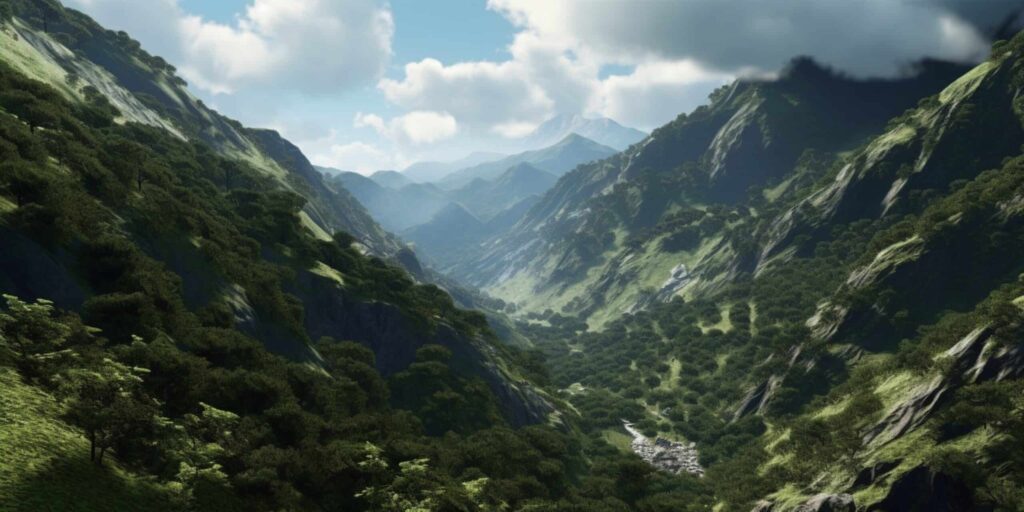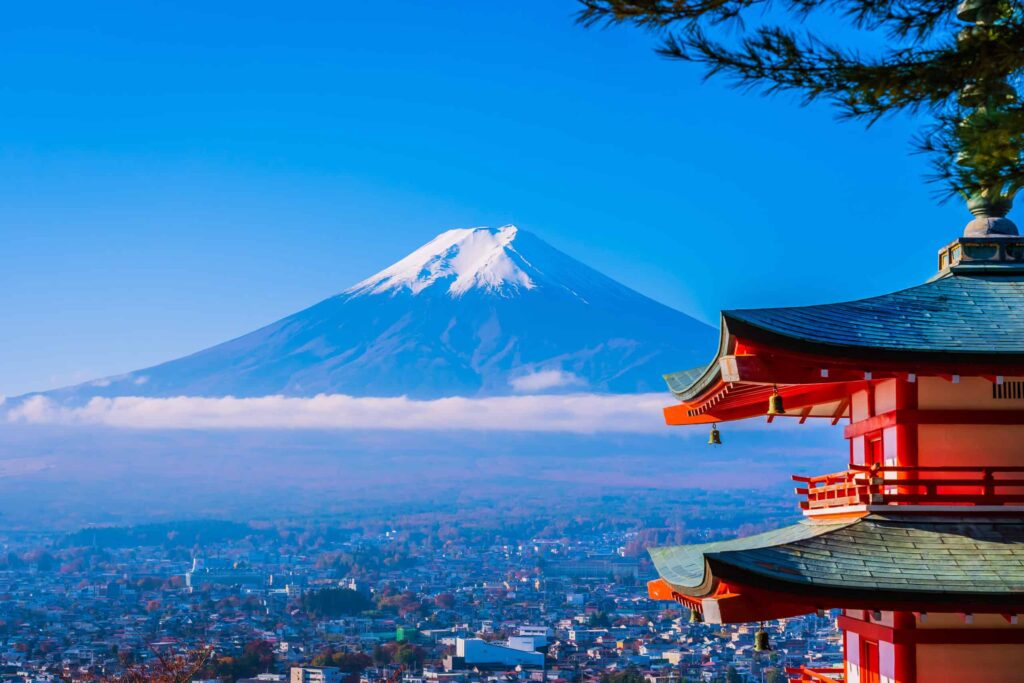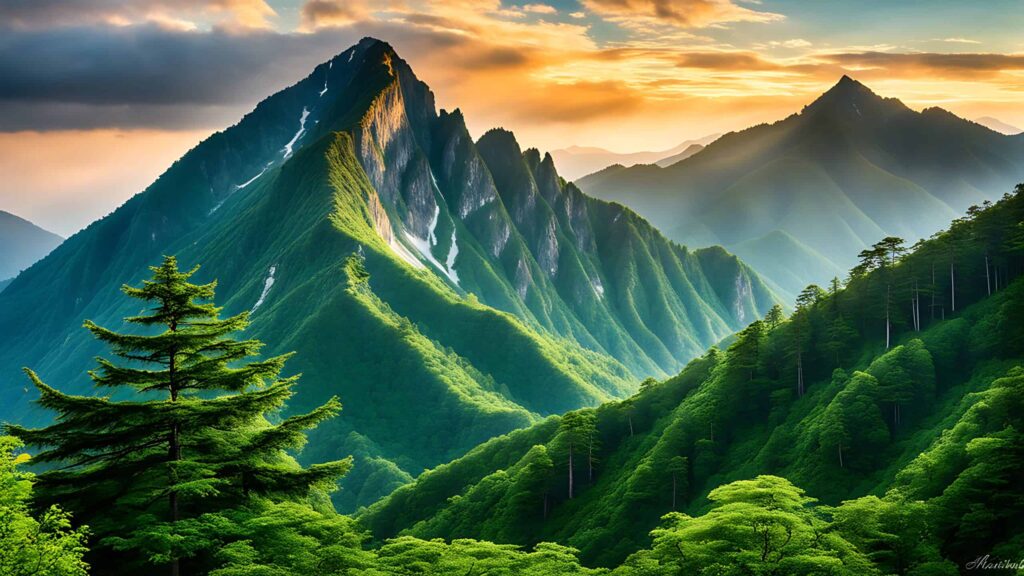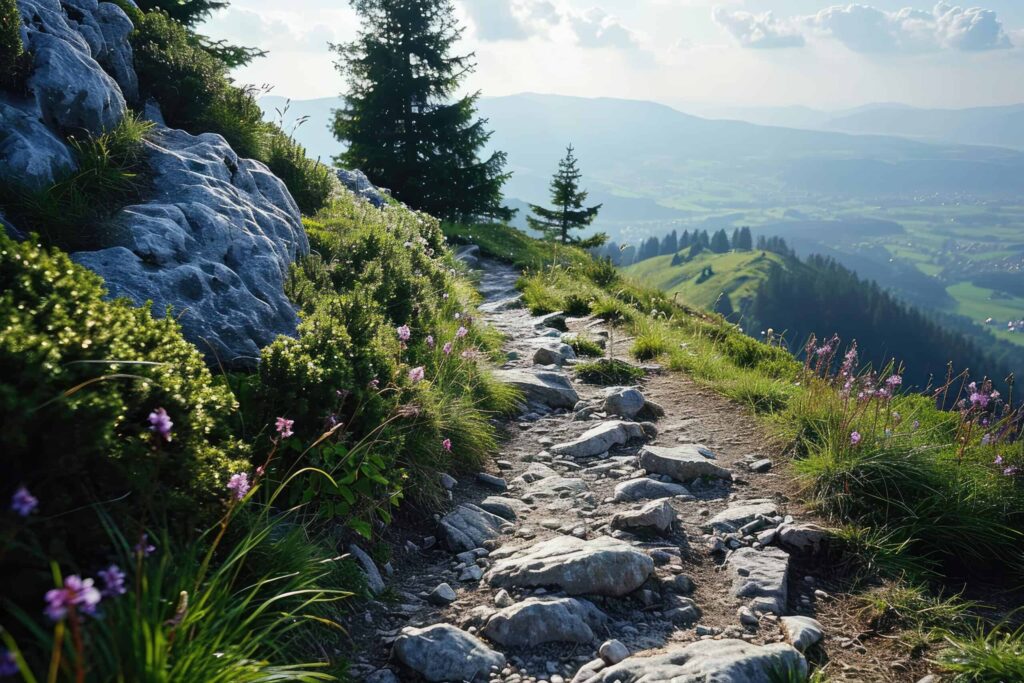Discover the captivating allure of Japan’s mountains, where serene landscapes merge with vibrant cultural experiences. From the iconic summit of Mount Fuji to the rugged trails of the Japanese Alps, these majestic ranges offer a stark contrast between tranquility and adventure. Explore ancient temples nestled amidst lush greenery or challenge yourself with exhilarating hikes through snow-capped summits. Whether seeking peaceful contemplation or adrenaline-pumping escapades, Japan’s mountains provide a diverse playground for nature enthusiasts and thrill-seekers alike. Uncover the unique blend of tradition and modernity that defines these mountainous regions, promising an unforgettable journey through Japan’s breathtaking natural wonders.
Key Takeaways
- Explore Japan’s Diverse Peaks: Discover the beauty and diversity of Japan’s mountains, ranging from towering peaks to lesser-known gems.
- Embrace Outdoor Adventures: Engage in hiking, climbing, and other outdoor activities to summit the stunning landscapes and natural wonders of Japanese mountains.
- Contribute to Conservation: Support conservation efforts to preserve the unique ecosystems and biodiversity found in Japan’s mountainous regions.
- Appreciate Cultural Significance: Understand the cultural importance of mountains in Japan, reflected in art, literature, and religious practices.
- Plan Your Mountain Adventure: Use the ranking and highlights provided to plan your next mountain adventure in Japan, whether seeking challenging summits or serene landscapes.
- Celebrate Nature’s Splendor: Enjoy the scenic beauty and tranquility of Japan’s mountains while being mindful of sustainable practices to protect these natural treasures.
Exploring Japan’s Majestic Mountains
Diverse Terrain
Japan boasts a diverse mountainous terrain, offering a range of experiences for nature enthusiasts. From the iconic Mount Fuji to the rugged peaks of the Japanese Alps, there is something for every type of adventurer.
The country’s unique geography, with its numerous islands scattered across the Pacific Ocean, contributes to the formation of these majestic mountains. Visitors can witness stunning views of lush green valleys and snow-capped peaks as they traverse through this picturesque landscape.
Cultural Significance
Mountains hold immense cultural significance in Japan, often regarded as sacred sites. Throughout history, these mountains have been revered as places where gods and spirits reside. The deep connection between the Japanese people and their mountains is evident in various rituals and traditions that have been passed down through generations.
Shrines nestled amidst the mountains serve as spiritual sanctuaries, attracting pilgrims seeking solace and enlightenment. These sacred sites are not only religious centers but also symbols of Japan’s rich cultural heritage.
Spiritual Importance
Mount Fuji stands as a symbol of Japan’s spiritual heritage, revered for its beauty and grandeur. As an active volcano, it holds a special place in the hearts of the Japanese people. Every year, thousands of visitors flock to Mount Fuji to witness its awe-inspiring presence and climb its iconic slopes.
The spiritual importance of Mount Fuji is further highlighted during cherry blossom season when the delicate pink flowers bloom at its base, creating a breathtaking contrast against the mountain’s rugged terrain. This natural spectacle attracts both locals and tourists alike, emphasizing the harmonious relationship between nature and spirituality in Japanese culture.
Ranking Japan’s Tallest Peaks
Heights Comparison
Mount Fuji, standing at 3,776 meters, is Japan’s highest peak and an iconic symbol of the country. In comparison, Mount Kita reaches 3,193 meters, while Mount Okuhotaka stands tall at 3,190 meters.
Geographical Locations
- The top five highest mountains in Japan are primarily located on the main island of Honshu.
- Mount Fuji, Mount Kita, and Mount Okuhotaka are part of the Northern Alps range in central Honshu.
- Mount Hotakadake and Mount Yarigatake complete the list of the top five tallest peaks in Japan.
Significance in Landscape
Japan’s tallest peaks play a vital role in shaping the country’s unique landscape. These majestic mountains not only offer breathtaking views but also attract hikers and nature enthusiasts from around the world.
The towering presence of Mount Fuji, with its symmetrical cone shape, holds cultural and spiritual significance for the Japanese people. It has been depicted in various art forms over centuries and remains a UNESCO World Heritage Site.
The Northern Alps range, where Mount Kita and Mount Okuhotaka are situated, provides a rugged terrain that challenges climbers with its steep slopes and rocky paths. Despite the difficulties, these mountains offer unparalleled beauty with diverse flora and fauna thriving in their alpine environments.
Hiking trails leading to these summits provide adventurers with a chance to experience Japan’s natural wonders up close. From lush forests to snow-capped peaks, each step towards these towering giants unveils a different facet of Japan’s rich biodiversity.
Exploring these tall peaks not only offers physical challenges but also allows visitors to immerse themselves in Japan’s deep-rooted mountain culture. Local traditions, such as hot spring baths (onsen) nestled in mountain villages or enjoying authentic Japanese cuisine after a long day of hiking, add layers of authenticity to the overall mountain experience.
Highlights of Mountains Over 1000 Meters
Notable Peaks
Japan boasts a plethora of major mountains that soar above 1000 meters, offering breathtaking views and challenging hiking opportunities. From the iconic Mount Fuji to the majestic peaks of the Northern Alps, these mountains are a testament to Japan’s diverse topography.
Prefectures Hosting Majestic Peaks
Various mountain ranges span across different prefectures in Japan, each offering a unique experience for avid hikers and nature enthusiasts. The Chugoku region is home to the stunning Chugoku Mountains, while the Kansai region boasts the picturesque Kii Mountain Range.
Diverse Heights
The heights of these majestic summits vary significantly, with Mount Fuji standing tall at 3,776 meters as Japan’s highest peak. In contrast, Mount Tate in the Northern Alps reaches an impressive height of 3,015 meters, providing a challenging yet rewarding climb for adventurers.
Scenic Beauty
The beauty of these majestic points goes beyond their heights; they offer stunning vistas of lush forests, serene lakes, and cascading waterfalls. Mount Yari in the Northern Alps, known for its rugged terrain and panoramic views, is a favorite among experienced hikers seeking an adrenaline-pumping adventure.
Proximity to Urban Centers
Despite their remote locations, many of these majestic cities are easily accessible from major urban centers like Tokyo and Osaka. For example, Mount Takao near Tokyo offers a quick escape from the bustling city life, allowing visitors to immerse themselves in nature within an hour’s journey.
Discovering Mountains Under 1000 Meters
Lesser Peaks
Japan’s landscape is not only dominated by towering mountains but also features lesser peaks under 1000 meters. These smaller mountains offer unique opportunities for hiking and exploration, often overlooked by tourists.
Hidden Gems
These lesser-known peaks hold a special charm, providing stunning views of the surrounding countryside and a sense of tranquility away from the bustling cities. Exploring these hidden gems allows visitors to connect with nature on a more intimate level.
Diverse Heights
Japan’s mountainous terrain boasts a diverse range of heights, with peaks ranging from towering giants to modest hills under 1000 meters. This diversity offers varied experiences for outdoor enthusiasts, catering to different skill levels and preferences.
Significance of Japan’s Mountainous Terrain
Cultural Influence
Japan’s mountainous terrain plays a pivotal role in shaping the country’s culture. With over 70% of its land covered in mountains, Japan’s geography has greatly influenced its cultural practices and beliefs. The rugged landscape has fostered a deep connection between the Japanese people and nature.
The traditional Japanese art of Shugendo, which focuses on spiritual training in mountainous regions, exemplifies the cultural significance of Japan’s mountains. This practice involves asceticism, meditation, and a deep respect for nature, reflecting the profound impact of mountains on Japanese spirituality.
Economic Importance
The mountainous regions of Japan hold significant economic value for the country. Despite their challenging terrain, these areas are vital for various industries such as forestry, agriculture, and tourism. The rich biodiversity found in Japan’s mountains supports diverse flora and fauna, contributing to the nation’s ecological wealth.
Forestry activities in Japan’s mountainous areas provide essential resources like timber and bamboo, sustaining local economies and traditional craftsmanship. Agriculture thrives in mountain valleys where terraced fields produce crops like rice and tea. These agricultural practices not only support local communities but also preserve Japan’s cultural heritage.
Tourism is another key economic driver facilitated by Japan’s mountains. Popular destinations like Mount Fuji attract millions of visitors annually, boosting revenue through accommodations, transportation, and recreational activities. The scenic beauty and cultural significance of these mountainous regions make them attractive to both domestic and international tourists.
Traditional Practices
In addition to economic benefits, Japan’s mountainous terrain has influenced various traditional practices within the country. One notable example is onsen, natural hot springs that are prevalent in mountainous areas. These geothermal springs have long been cherished by the Japanese for their therapeutic properties and relaxation benefits.
The concept of yamabushi, or mountain priests, further demonstrates how mountains have shaped traditional beliefs in Japan. Yamabushi are spiritual practitioners who undergo rigorous training in secluded mountain locations to attain enlightenment. Their practices emphasize harmony with nature and spiritual purification through physical challenges in mountainous environments.
Unique Features of Lesser-Known Peaks
Crater Exploration
Japan’s lesser-known peaks offer a unique opportunity for crater exploration. These mountains, often located on the outskirts of the main islands, boast hidden volcanic craters waiting to be discovered. The thrill of venturing into these mysterious formations adds an exciting dimension to any hiking experience.
Breathtaking Views
One of the distinctive characteristics of these underrated mountains is the breathtaking views they offer. As you ascend these lesser-known peaks, you are rewarded with panoramic vistas that showcase Japan’s diverse landscapes. The beauty and tranquility found at these heights are unparalleled, providing a serene escape from the hustle and bustle of city life.
Off-the-Beaten-Path Adventures
Embark on off-the-beaten-path adventures in Japan’s small island peaks for a truly immersive experience. Away from the crowded tourist spots, these mountains present an opportunity to connect with nature on a deeper level. Explore hidden trails, encounter unique flora and fauna, and engage in activities that showcase the rich cultural heritage surrounding these areas.
Outdoor Adventures in Japanese Mountains
Hiking Trails
Japan offers diverse hiking trails catering to all levels of expertise, from beginners to seasoned hikers. The country’s mountains boast a variety of terrains, including lush forests, serene lakes, and challenging peaks.
Exploring the hiking routes in Japan provides an opportunity to immerse oneself in nature while witnessing stunning landscapes. One can choose from short day trips to longer multi-day excursions, each offering unique experiences along the way.
Mountaineering Opportunities
For enthusiastic mountaineers, Japan’s mountains present a plethora of challenges and rewards. With iconic peaks like Mount Fuji and the Northern Alps, climbers have the chance to test their skills and endurance against these majestic summits.
The country’s mountain ranges are not only renowned for their beauty but also for the technical aspects they offer climbers. From snow-covered slopes to rocky cliffs, each ascent provides a different set of obstacles and thrills.
Winter Adventures
During the winter months, Japan’s mountains transform into a snow-covered paradise for outdoor enthusiasts. Skiing, snowboarding, and snowshoeing are popular activities that attract visitors from around the world to experience the country’s winter wonderland.
The national parks in Japan become hubs for winter sports enthusiasts, offering well-groomed slopes, powder-filled runs, and stunning views of snow-capped peaks. Whether it’s gliding down slopes or exploring snowy trails, there is something for everyone to enjoy in Japan’s winter mountains.
Nature Exploration
Apart from adrenaline-pumping activities, Japanese mountains provide ample opportunities for nature lovers to explore diverse ecosystems and wildlife habitats. The dense forests teeming with ancient trees and vibrant flora create a serene environment for those seeking solace in nature.
Birdwatching, photography expeditions, and nature walks are some of the ways visitors can engage with the natural beauty of Japan’s mountains. Each season brings its own charm, from cherry blossoms in spring to vibrant foliage in autumn.
Conservation Efforts for Mountainous Regions
Sustainable Practices
Japan’s mountain ranges are not only breathtaking landscapes but also vital ecosystems. To protect these areas, conservationists promote sustainable practices like responsible tourism and waste management.
Sustainable tourism ensures that visitors can enjoy the beauty of Japan’s mountains without causing harm to the environment. By following designated trails and respecting wildlife, tourists play a crucial role in preserving these delicate ecosystems.
Waste management is another key aspect of sustainable practices in mountain conservation. Proper disposal of trash and recycling efforts help maintain the pristine nature of Japan’s mountains, preventing pollution and habitat destruction.
Environmental Challenges
Despite their natural beauty, Japan’s mountainous regions face various environmental challenges. Climate change poses a significant threat, leading to issues like melting glaciers, altered precipitation patterns, and increased natural disasters.
Deforestation is another critical challenge affecting Japan’s mountain ranges. The loss of forests not only impacts biodiversity but also contributes to soil erosion, landslides, and habitat degradation for native species.
To combat these challenges, conservation efforts focus on reforestation projects, habitat restoration, and climate change mitigation strategies. These initiatives aim to preserve the unique flora and fauna found in Japan’s mountains while safeguarding against environmental threats.
Biodiversity Conservation
The rich biodiversity of Japan’s mountainous regions is a treasure worth protecting. From rare plant species to endangered animals, these areas are home to a diverse range of life forms that need safeguarding.
Conservationists work tirelessly to protect endangered species like the Japanese macaque and the Japanese serow. By establishing protected areas and implementing conservation programs, efforts are made to ensure the survival of these vulnerable species in their natural habitats.
Through education and community involvement, conservationists raise awareness about the importance of biodiversity conservation in Japan’s mountains. Engaging local communities in conservation efforts helps foster a sense of stewardship towards the environment and encourages sustainable practices for future generations.
Closing Thoughts
You’ve delved into the breathtaking world of Japan’s mountains, discovering their beauty, significance, and the adventures they offer. From towering peaks to hidden gems under 1000 meters, each mountain has a story to tell and an experience to offer. As you’ve learned about conservation efforts and unique features, you’ve gained a deeper appreciation for Japan’s mountainous terrain.
Now, it’s your turn to explore these majestic landscapes firsthand. Plan your outdoor adventure, hike through lush forests, and summit peaks that offer panoramic views. By experiencing Japan’s mountains yourself, you not only embrace nature’s wonders but also contribute to their preservation for future generations to enjoy.
Frequently Asked Questions
What makes Japan’s mountains a popular destination for outdoor enthusiasts?
Japan’s mountains offer diverse landscapes, challenging hiking trails, and stunning views that attract adventurers seeking unique experiences in nature.
Are there any famous peaks in Japan that are under 1000 meters in height?
Yes, there are several renowned peaks in Japan under 1000 meters, such as Mount Takao and Mount Tsukuba, known for their cultural and spiritual significance.
How do conservation efforts play a role in preserving Japan’s mountainous regions?
Conservation efforts in Japan focus on protecting biodiversity, preventing deforestation, and promoting sustainable tourism to maintain the ecological balance of mountain ecosystems.
What are some unique features of the sacred mountains, major mountains, and mountain ranges in Japan, ideal for mountaineering?
Lesser-known peaks in Japan often boast tranquil surroundings, off-the-beaten-path trails, and opportunities for solitude amidst nature’s beauty, appealing to those seeking peaceful mountain experiences.
Why is understanding the significance of Japan’s mountainous terrain, islands, volcanoes, and summits important for the country?
Recognizing the importance of Japan’s mountainous terrain helps raise awareness about environmental conservation, cultural heritage preservation, and sustainable development practices for future generations.

